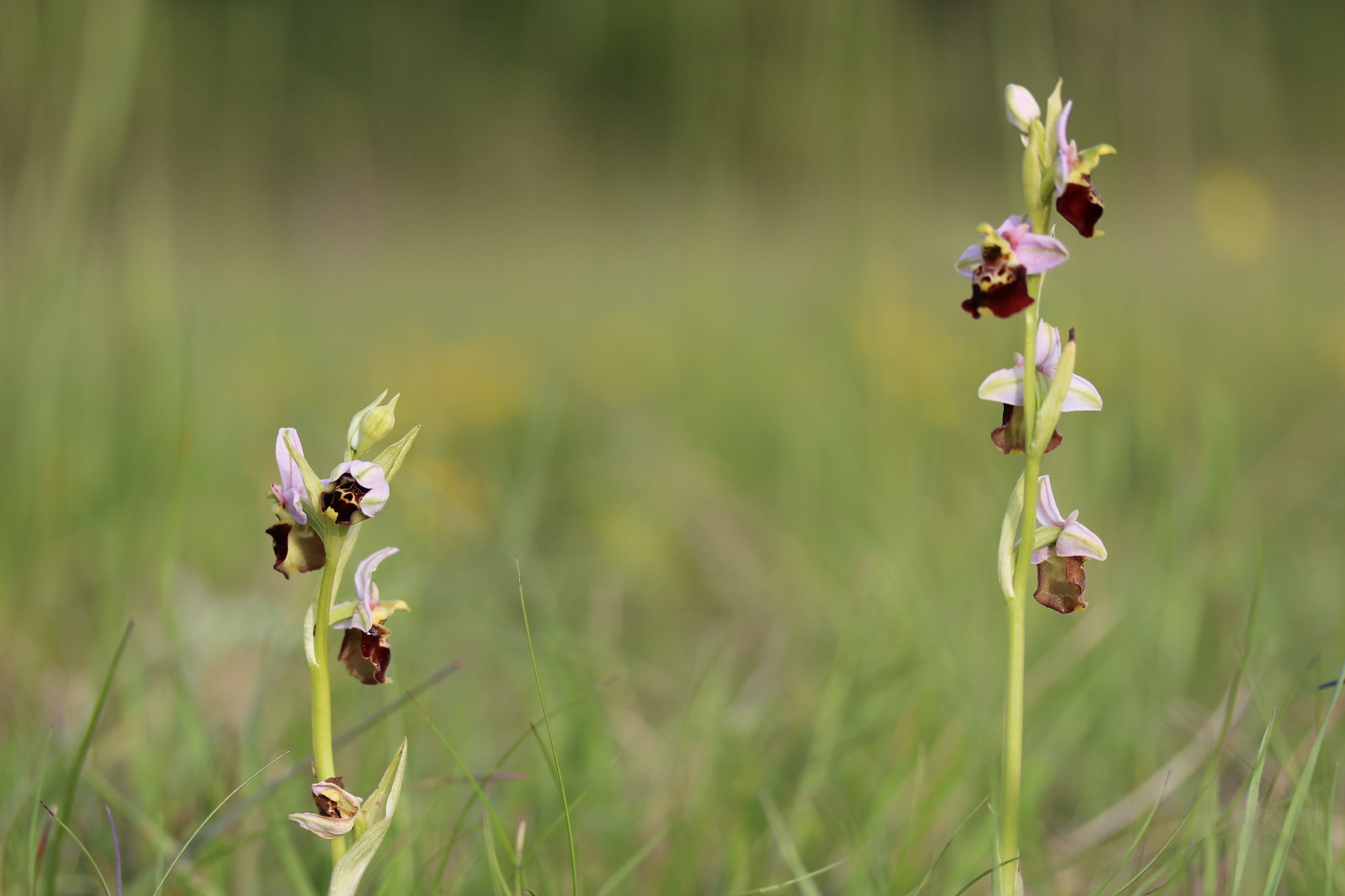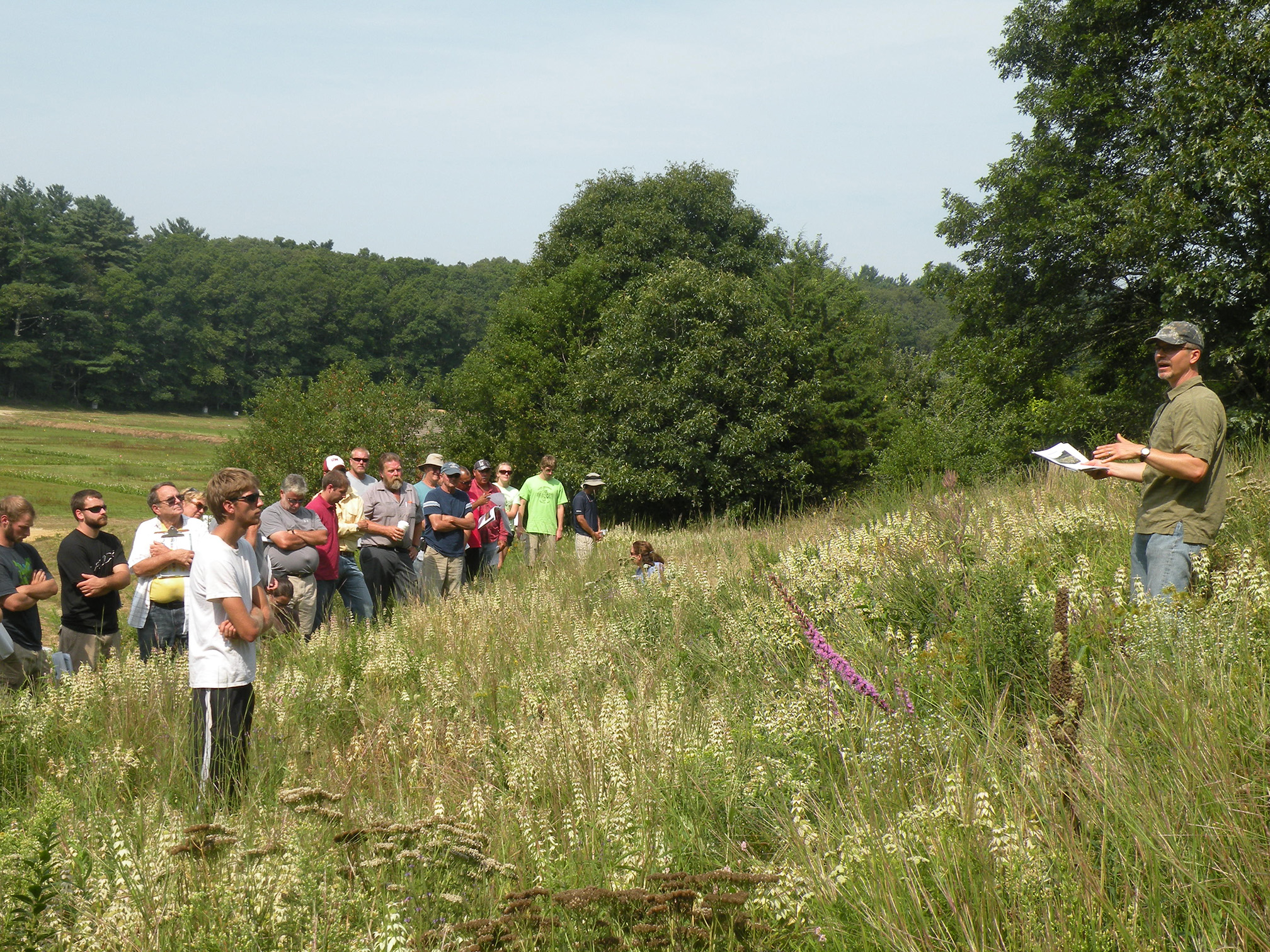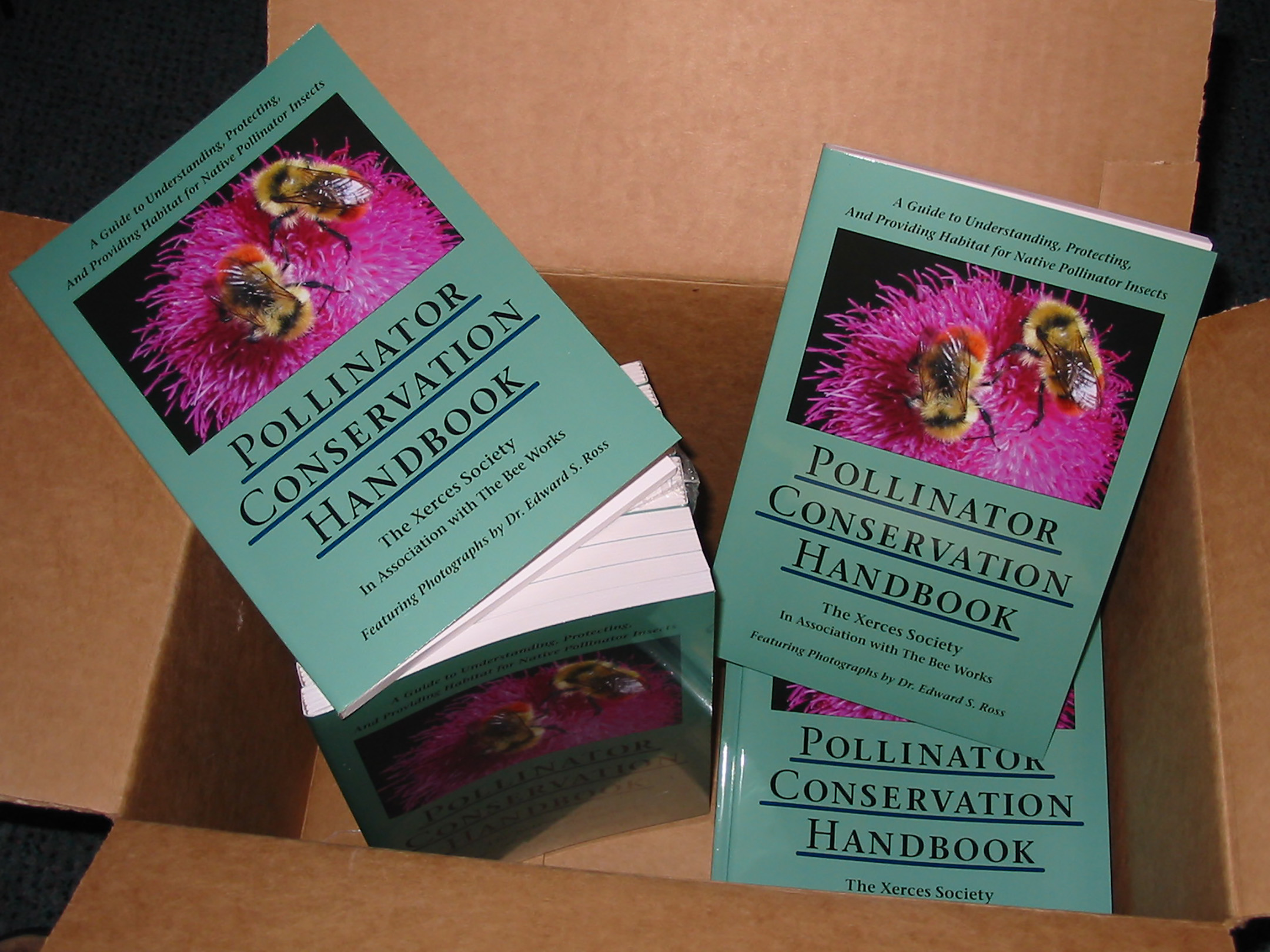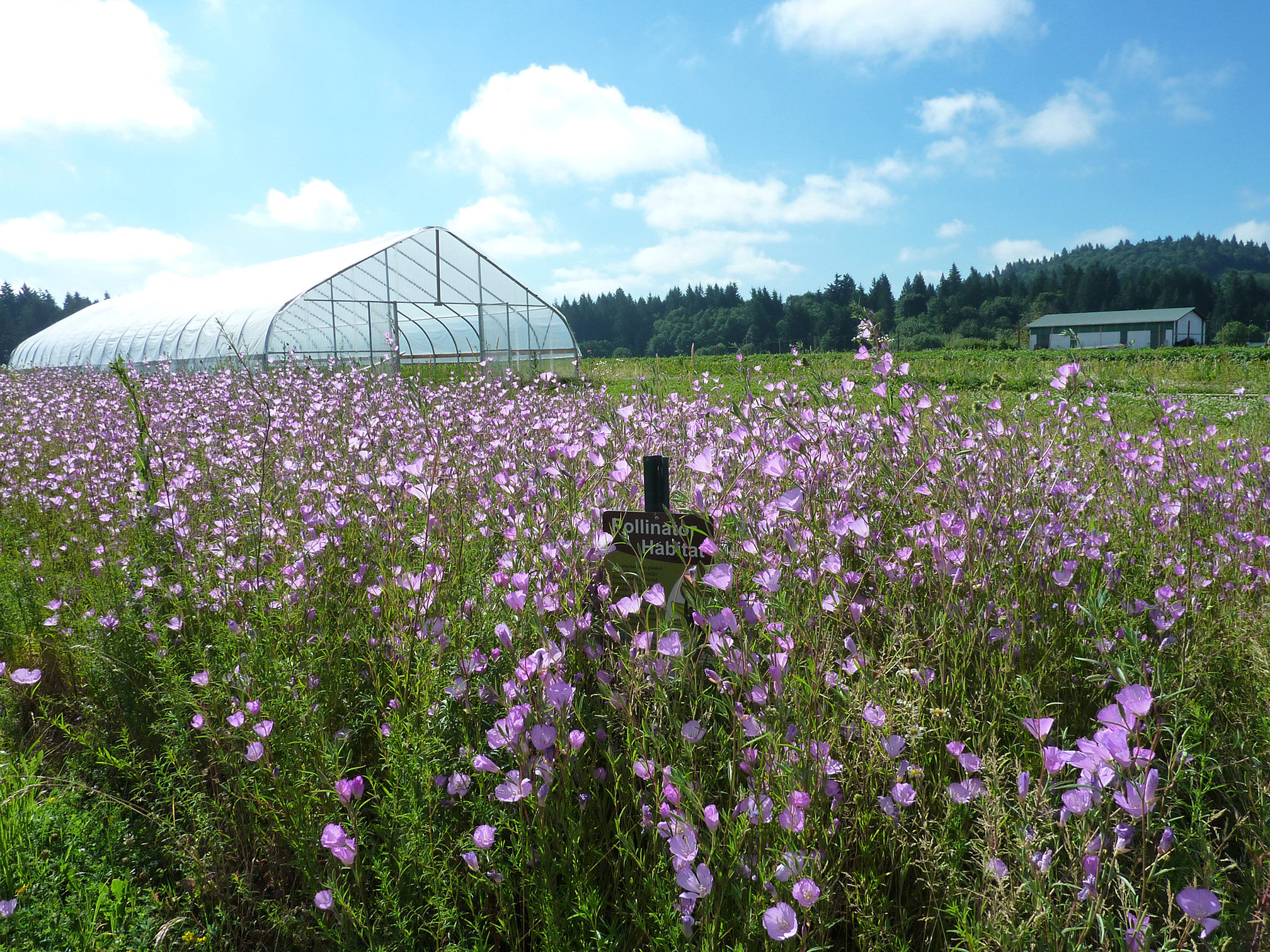My first introduction to pollinator conservation occurred on a sun-drenched hillside in southern England. The organization I was working for had spent several years restoring areas of species-rich grassland. Thanks to this effort, the ground was a carpet of wildflowers, including several rare orchids. With skylarks singing overhead and butterflies flitting past, it was an idyllic place to spend an afternoon working. But there was something missing. We had to move pollen between the orchids by hand, which led me to wonder who or what should be doing this and why had they not returned following the apparently successful restoration work? What I discovered completely changed my perspective on bees—and although I didn’t realize at the time, it would also be pivotal in my future career.
The missing pollinators were solitary ground-nesting bees. Until that time, like so many people, I thought that bees were honey bees or bumble bees and lived in hives. Now I learned that bees were far more diverse (250 species in Britain) and the majority were not social, making individual nests by digging into the ground or occupying small cavities. To add to my amazement, these orchids were pollinated by male bees duped into thinking the flowers were female bees by the markings on the petals. I’d been working in conservation for nearly a decade and this was all a revelation.

The late spider orchid was one of the rare flower species that the author encountered in England, and which opened his eyes to the true diversity of bees and the fascinating relationships between plants and their pollinators. (Photo: Björn S…, Flickr [CC BY-SA 2.0])
Jump forward a few years to the late-1990s, and I found myself newly wed to an American (who I met in Kenya, but that’s a different story), recently arrived in Oregon, and seeking a job. I had the good fortune to meet Melody Mackey Allen, the then executive director of Xerces. We got talking about bees, I told her of my hillside revelation, and Melody ask me to work on a project providing advice to a group of golf courses undertaking habitat improvements for pollinators (I had done conservation on golf courses in Britain). Xerces was involved in a new initiative, the Forgotten Pollinators Campaign launched by Gary Paul Nabhan and Stephen Buchmann, and this project was one of the early habitat conservation efforts. That project led to the first fact sheets Xerces produced on bee-friendly plants and providing bee nesting sites, as well as invitations to speak at national conferences, and ultimately, to the first pollinator conservation guide, Making Room for Native Pollinators, published in 2002 in partnership with the USGA.
In the years since, there has been a groundswell of enthusiasm for pollinators that has grown and grown. We once would have national meetings around a single table; now people pack the community room of a library for a Saturday morning talk on pollinators. People from all walks of life want to do something to help bees, from artists and craftspeople fabricating beautiful pieces for sale, to chefs hosting pollinator-dependent meals, to millions of people creating habitat. A desire to protect bees and other pollinators is a movement that has swept the country.

Mace Vaughan talks during a farm day to show growers how to create pollinator habitat. Reaching people where they live and work has been a fundamental part of Xerces outreach. (Photo: Anne Averille, University of Massachusetts.)
Xerces has been at the forefront of this movement, helping to guide its direction and provide information that enables others to act. Thanks to its early work, the society was well-placed in the early 2000s when there was sudden alarm about falling pollinator numbers. By then, Scott Black had replaced Melody (who retired) and Mace Vaughan had joined the staff, and we had expanded our pollinator efforts. Since then, Xerces has added many remarkable individuals who bring a breadth of knowledge and experience, as well as a passion for engaging a wide range of communities in conservation. We also built an extensive network of university and agency scientists who shared knowledge and partnered on research. Twenty years on and Xerces now has the largest pollinator conservation team in the world, and is recognized as a trusted source of science-based conservation advice by farmers, land managers, policy makers, and gardeners.
Salient points on this journey include being asked in 2002 by Claire Kremen, then at UC Berkeley, to collaborate on a project promoting on-farm habitat in Yolo County, CA. This ultimately led to a partnership with the NRCS in California, which evolved into a nationwide partnership, with Xerces staff training and supporting agency conservationists and developing technical notes. In addition, we published Farming for Bees (now in its 4th edition), which set the standard for conservation guidance, and was the first in a series of guidelines tailored to the needs of particular audiences.
Another report that fueled conservation efforts was Are Neonicotinoids Killing Bees?, a review of the impacts of neonicotinoid insecticides on bees (now out of print and superseded by How Neonicotinoids Can Kill Bees). Although some groups focus only on flowering habitat, Xerces uses science to guide our work and the data clearly shows that pesticides are a major driver of pollinator decline. This report became the foundation for pesticide advocacy by Xerces and many other organizations.
Along the way, we also produced the Pollinator Conservation Handbook, the first book written for a general audience that offered actionable steps to address pollinator declines. The popularity of this led to a long-term relationship with Storey Publishing that has resulted in an ongoing series of books, from Attracting Native Pollinators to the recent 100 Plants to Feed the Monarch.

The Pollinator Conservation Handbook was published in 2003, the first book for a general audience that provided practical steps for countering pollinator declines. (Photo: Xerces Society / Matthew Shepherd.)
Pollinators are a hugely diverse and varied group of animals—as I now know, there are over 3,600 species of bees in the US and Canada—and the work Xerces does reflects that. Our programs focus on pollinator conservation, endangered species, pesticide reduction, and community engagement and outreach, but the work is not neatly separated. We work as an integrated team on a range of overlapping tasks including:
- Habitat protection and creation: Our staff partner with federal, state, and local agencies as well as farmers, land managers, and others to create, enhance, or restore habitat on farms, rights-of-way, business campuses, parks, gardens, and other spaces. We also work to protect existing habitat for rare butterflies and bees, as well as for pollinators in general. More than 2.5 million acres have been protected and restored.
- Pesticide reduction: We advocate for policy changes, support drafting of legislation, work with growers to change how farms are managed, and encourage cities to pass regulations.
- Community science: Projects including Western Monarch Thanksgiving Count, Western Monarch Milkweed Mapper, Bumble Bee Watch, and regional bumble bee atlases harness thousands of volunteers to gather data that informs conservation and policy decisions.
- Protecting endangered species: We use existing laws such as the Endangered Species Act to protect imperiled species like the rusty patched bumble bee, monarch butterfly, Taylor’s checkerspot, Hawaiian yellow-faced bees, and the Carson wandering skipper.
- Education and training: We present webinars, workshops, and short courses on a variety of topics that reach tens of thousands of people each year. We have directly reached over 150,000 people with our conservation message.
- Community engagement: Volunteer Ambassadors are trained to work in their home communities to share information and guidance.
- Publications: We publish fact sheets, conservation guidelines, scientific reports, books, and many other highly regarded publications.
- Focused initiatives: Bee Better Certified is the only third party certified pollinator conservation certification and partners with innovative farmers and food companies to protect bees and other pollinators in agricultural lands—and gives consumers confidence that their purchasing decisions actually benefit pollinators. Bee City USA and Bee Campus USA brings people together to make their communities better places for pollinators, and recognizes them for their efforts. More than 250 cities and campuses are now part of our effort.

In collaboration with a wide range of partners, Xerces' work has resulted in the creation, restoration, or protection of millions of acres of habitat over the last two decades. (Photo: Xerces Society / Brianna Borders.)
Although our focused effort on pollinators started in the 1990s, Xerces has been working on pollinator conservation since the society’s origins fifty years ago. From the earliest days as a volunteer-run group, the organization took on protection of butterflies, advocating to save habitat for some of the rarest and most imperiled butterflies in the planet at a time when no one else was. In its first years, Xerces also launched the Fourth of July Butterfly Count, published species fact sheets and conservation information, and produced the journal Atala, as well as our magazine, Wings, in its initial incarnation as a black-and-white newsletter.
I’ve had the good fortune to have been a part of this work for over two decades, and to witness the incredible work done by so many people that has shifted bees and other pollinators out of an overlooked corner and into the conservation mainstream. Although Xerces’ conservation work encompasses a broad selection of invertebrates, from freshwater mussels to grasshoppers, protecting pollinators, particularly native bees and butterflies, and their habitats forms the core. After all, if we can preserve the places that support these essential insects, we will be taking large strides toward protecting the life that sustains us.
Further Reading
Learn what you can do to Bring Back the Pollinators and take the Pollinator Protection Pledge.
The Pollinator Conservation Resource Center contains a wealth of information.
Participate in community science with Bumble Bee Watch.
For farmers and food companies: Bee Better Certified.
For towns, cities, and colleges: Bee City USA & Bee Campus USA.




